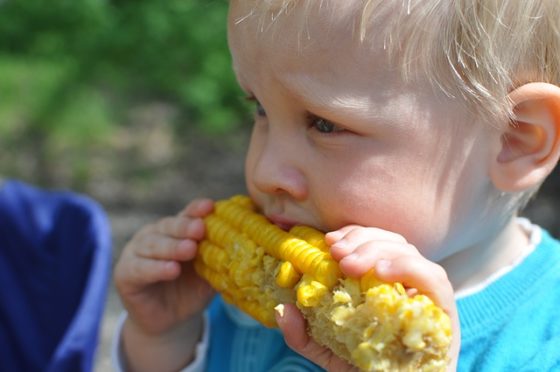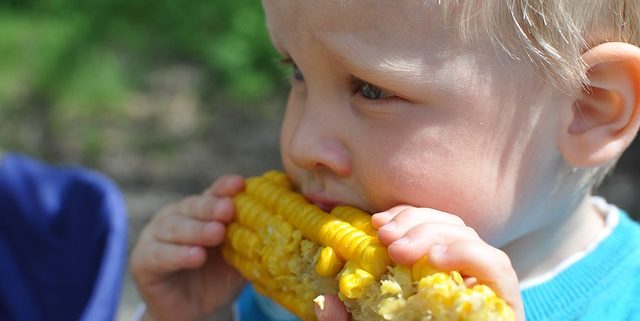The Causes of Childhood Obesity: Protecting Your Little One

Obese children may develop conditions like prediabetes and a predisposition to heart problems. Plus they are likely to become obese adults and suffer from type 2 diabetes, high blood pressure, heart disease, stroke, liver disease, joint problems, and certain kinds of cancer. Worse yet, obesity in children may increase the risk of health problems in adulthood even if they get back to a healthy weight.
In other words, helping your little one maintain a healthy weight is crucial to their health later in life. So let’s take a look at the causes of childhood obesity and how we can prevent them.
Here are the highlights:
- More than a third of children in the US are overweight or obese
- Children that have BMIs in the 85th percentile or higher are considered overweight; BMIs in the 95th percentile or higher are considered obese
- Overweight mothers are more likely to have babies with a high birth weight, which in turn makes those babies more likely to become obese
- Genetic factors may predispose children to becoming overweight
- Exposure to chemical compounds called “obesogens” can affect the way our bodies process and metabolize food, predisposing us to gain weight
- Exposure to obesogens in utero increase the likelihood that a baby will become obese
Contents
What Is Childhood Obesity?
What makes a child “obese”? Obesity is measured by BMI (body mass index), which is calculated by comparing your height and weight. It’s not a perfect measure, but it generally corresponds well to the amount of fat in your body. Adults can compare their BMIs to standard ranges; anything up to 25 is considered healthy. A BMI between 25 and 30 is considered overweight. A BMI between 30 and 40 is considered obese, and anything over 40 is considered extremely obese.
But children are growing and changing all the time, so BMI measurement is trickier. Rather than a simply height/weight calculation, children’s BMIs are measured using tables that compare the heights and weights of other kids that are the same age and sex. Children at or above the 85th percentile on those charts are considered overweight and children over the 95th percentile are considered obese.
Your child’s doctor can also help you determine if your child is overweight.
What Are The Causes Of Childhood Obesity?
Your weight is a function of what you put into your body versus what you burn. For a long time, we’ve believed that’s all it is – eat 2,000 calories, burn 2,000 calories, stay the same weight. And while that is a very important factor, it turns out that there are plenty of other causes of childhood obesity as well.
1. Diet And Exercise
It’s not the only factor, but it’s a big one. Children need a healthy, balanced diet with lots of whole grains, fruits and veggies, and lean protein. They don’t need processed, sugary foods and drinks – sweetened drinks (like soda, sports drinks, and many juice drinks) are actually the top source of added sugar for children in the US and 80% of kids drink them.
Kids also need 60 minutes or more of physical activity every day. That could be time spent on the playground, taking a long walk, or doing a sport or other activity.
And it’s not just the little ones themselves that need a healthy diet and exercise. Pregnant moms also need to maintain their health. Overweight moms are more likely to have gestational diabetes and deliver babies with a high birth weight. Babies born to mothers with gestational diabetes and babies with a high birth weight are significantly more likely to become obese. So, a healthy diet and exercise regimen during pregnancy is a key element in preventing obesity in your child.
2. Genetics
Humans didn’t always have access to a McDonald’s on every corner. Through much of human evolution, our meals could be few and far between. So, storing up excess calories as fat was actually a good thing. It helped us survive between meals. But now, we have access to so much food that it’s easy to overeat, meaning our evolutionarily-beneficial calorie storage prowess is now a detriment to our health.
Some people are simply genetically better at storing fat and burning fewer calories than other people. Researchers have identified some genes that may be linked to obesity and the condition clearly runs in families – if you have a family history of obesity, you’re anywhere from 2 to 8 times more likely to be obese than someone with no family history.
There are also certain genetic conditions that can cause obesity. Bardet Biedl syndrome, for example, causes your body to store extra fat around your trunk. Prader-Willi syndrome is another example; it’s caused by an abnormality in chromosome 15 and causes insatiable appetite and constant overeating, among other symptoms.
There’s nothing you can do about your little one’s genetic predisposition to obesity, but you can be aware of it, monitor your child’s weight carefully, and educate them about healthy lifestyle habits. A genetic predisposition does not mean that obesity is unavoidable – you can still prevent it with a healthy lifestyle.
3. Environmental Factors
Recently, researchers have turned a spotlight on potential environmental factors that are linked to obesity in children and adults. These may be the least-known causes of childhood obesity: obesogens. Obesogens are chemical compounds that affect the way our bodies metabolize and store nutrients. Research is ongoing, but most of these compounds are thought to disrupt normal functioning of the endocrine system, which is responsible for regulating metabolism.
Researchers are still working to identify obesogens and isolate their effects in humans. BPA and PFOA, for example, have been found to increase the risk of obesity in animal studies. Most importantly, it appears that exposure in utero may have the same effect – and it may be permanent. In other words, there is evidence to suggest that our metabolic patterns are set up during our very early development and may increase our risk of obesity forever.
Unfortunately, the list of potential obesogens is growing and they’re very common. You can find them in plastic products, phthalates, and pesticides that are all over our homes and food.
There is one obesogen that is clearly linked to obesity when babies are exposed to it in utero: cigarette smoke. In fact, that may be the first obesogen ever identified. Babies born to mothers that smoke or that are exposed to a lot of secondhand smoke usually have a low birth weight, but grow faster to catch up and end up becoming obese. Children that were exposed to cigarette smoke in the womb are 50% more likely to be obese than children that were not exposed.
Protecting Your Baby From Childhood Obesity
We can avoid the causes of childhood obesity by:
- maintaining a healthy diet and exercise regiment during pregnancy
- not smoking during pregnancy
- avoiding obesogens where possible – for example, BPA and related compounds are found in some kinds of plastic, in the linings of canned foods, and in cash register receipts
- ensuring that your child has a healthy diet and exercise regimen
- being aware of and managing genetic conditions that may predispose your child to obesity
The causes of childhood obesity are varied, but remember that there is generally nothing that will force your child to become obese. It’s preventable, but it takes work.








Leave a Reply
Want to join the discussion?Feel free to contribute!